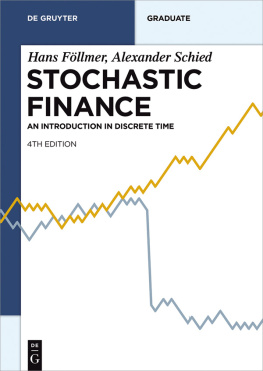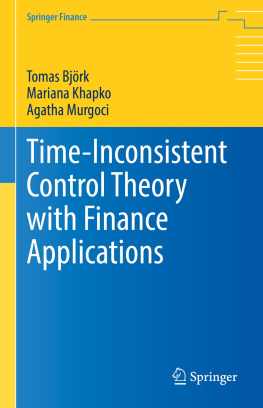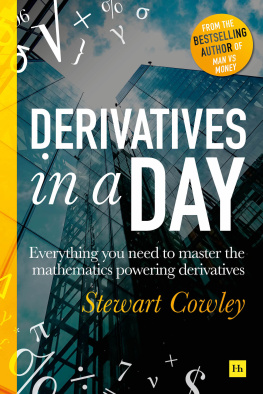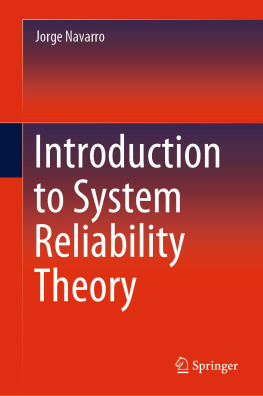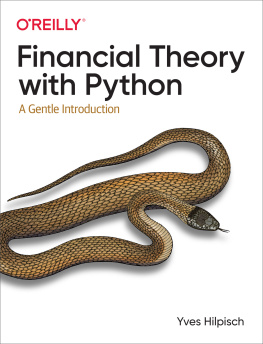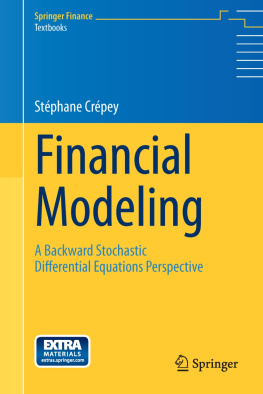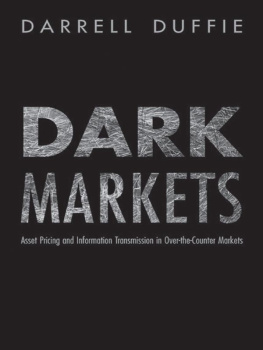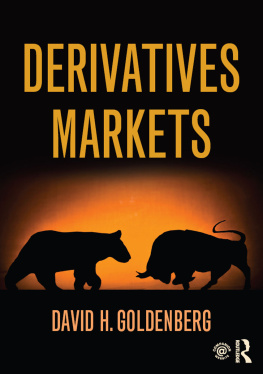Hans Föllmer - Stochastic Finance: An Introduction in Discrete Time
Here you can read online Hans Föllmer - Stochastic Finance: An Introduction in Discrete Time full text of the book (entire story) in english for free. Download pdf and epub, get meaning, cover and reviews about this ebook. year: 2016, publisher: de Gruyter, genre: Romance novel. Description of the work, (preface) as well as reviews are available. Best literature library LitArk.com created for fans of good reading and offers a wide selection of genres:
Romance novel
Science fiction
Adventure
Detective
Science
History
Home and family
Prose
Art
Politics
Computer
Non-fiction
Religion
Business
Children
Humor
Choose a favorite category and find really read worthwhile books. Enjoy immersion in the world of imagination, feel the emotions of the characters or learn something new for yourself, make an fascinating discovery.
- Book:Stochastic Finance: An Introduction in Discrete Time
- Author:
- Publisher:de Gruyter
- Genre:
- Year:2016
- Rating:3 / 5
- Favourites:Add to favourites
- Your mark:
Stochastic Finance: An Introduction in Discrete Time: summary, description and annotation
We offer to read an annotation, description, summary or preface (depends on what the author of the book "Stochastic Finance: An Introduction in Discrete Time" wrote himself). If you haven't found the necessary information about the book — write in the comments, we will try to find it.
This book is an introduction to financial mathematics. It is intended for graduate students in mathematics and for researchers working in academia and industry.
The focus on stochastic models in discrete time has two immediate benefits. First, the probabilistic machinery is simpler, and one can discuss right away some of the key problems in the theory of pricing and hedging of financial derivatives. Second, the paradigm of a complete financial market, where all derivatives admit a perfect hedge, becomes the exception rather than the rule. Thus, the need to confront the intrinsic risks arising from market incomleteness appears at a very early stage.
The first part of the book contains a study of a simple one-period model, which also serves as a building block for later developments. Topics include the characterization of arbitrage-free markets, preferences on asset profiles, an introduction to equilibrium analysis, and monetary measures of financial risk.
In the second part, the idea of dynamic hedging of contingent claims is developed in a multiperiod framework. Topics include martingale measures, pricing formulas for derivatives, American options, superhedging, and hedging strategies with minimal shortfall risk.
This fourth, newly revised edition contains more than one hundred exercises. It also includes material on risk measures and the related issue of model uncertainty, in particular a chapter on dynamic risk measures and sections on robust utility maximization and on efficient hedging with convex risk measures.
Contents:
Part I: Mathematical finance in one period
Arbitrage theory
Preferences
Optimality and equilibrium
Monetary measures of risk
Part II: Dynamic hedging
Dynamic arbitrage theory
American contingent claims
Superhedging
Efficient hedging
Hedging under constraints
Minimizing the hedging error
Dynamic risk measures
Hans Föllmer: author's other books
Who wrote Stochastic Finance: An Introduction in Discrete Time? Find out the surname, the name of the author of the book and a list of all author's works by series.

